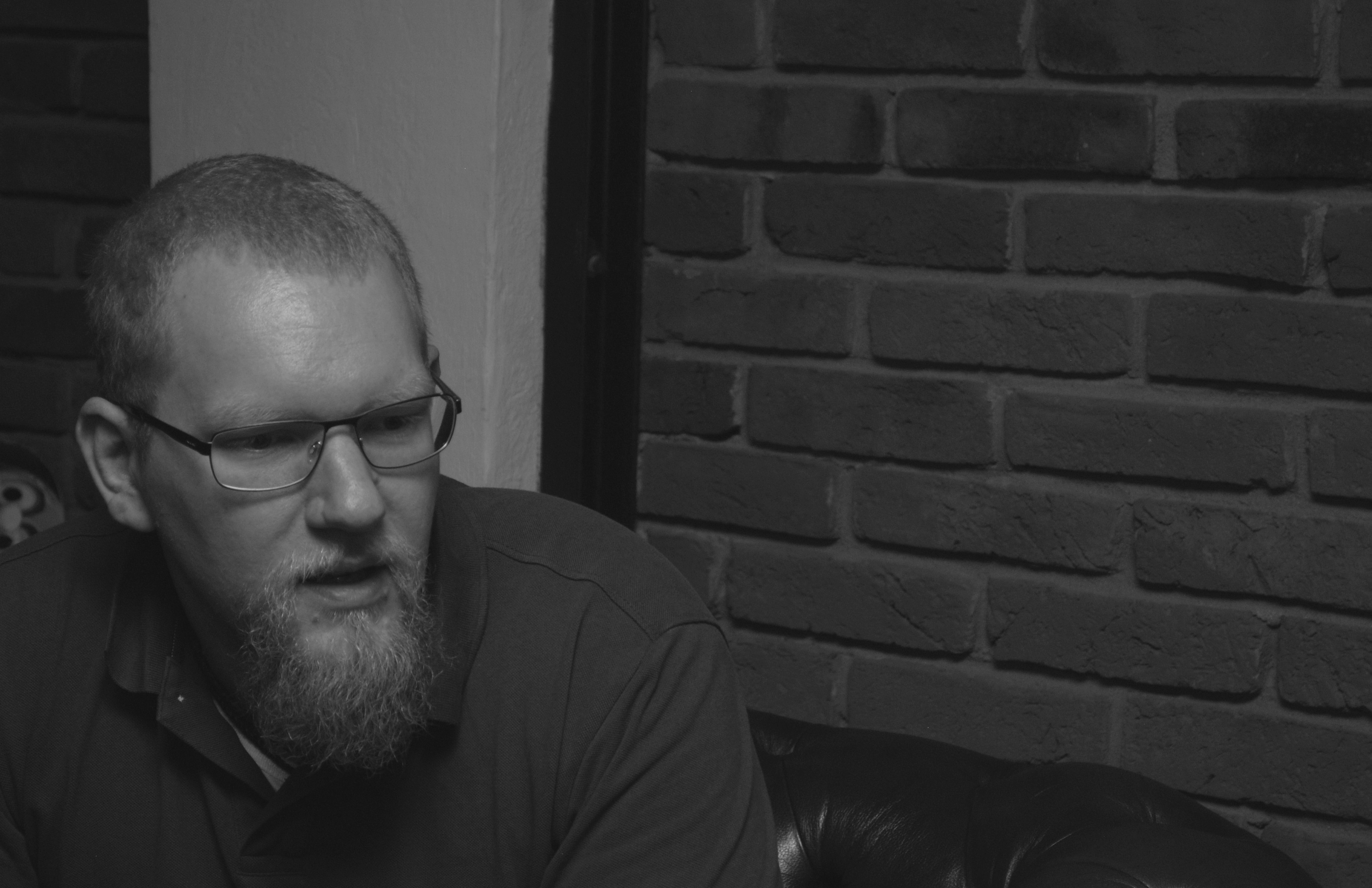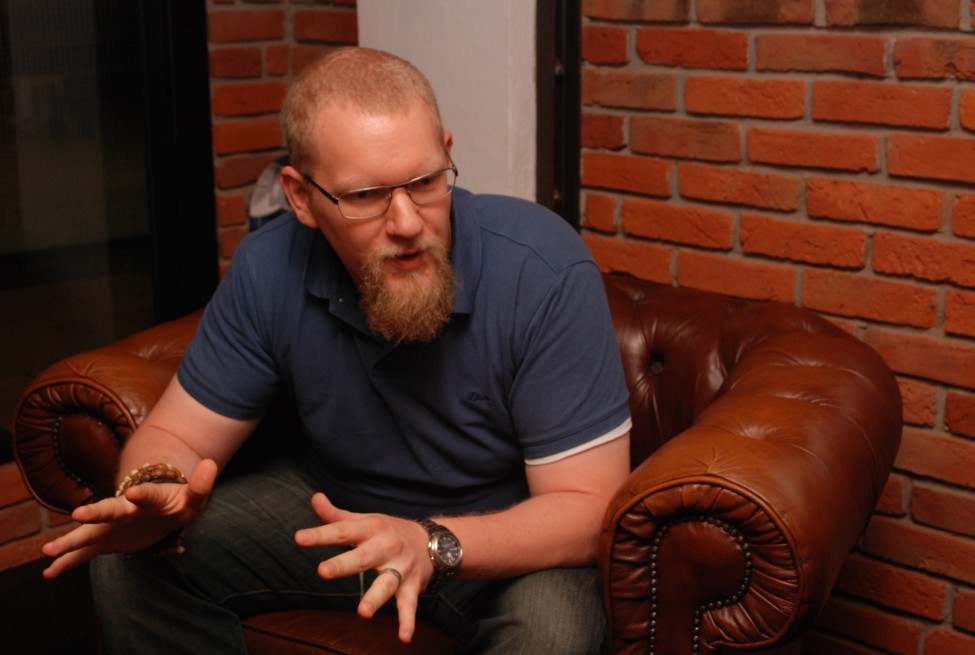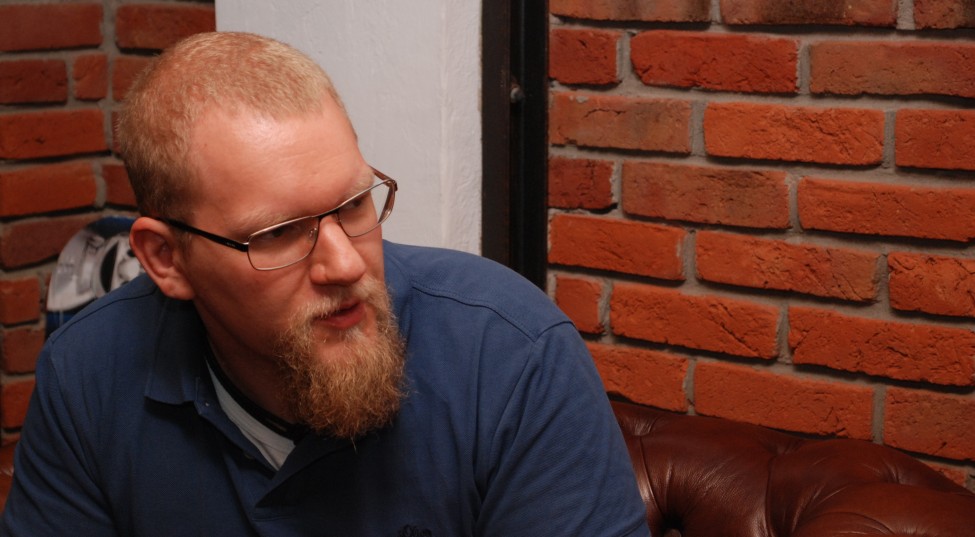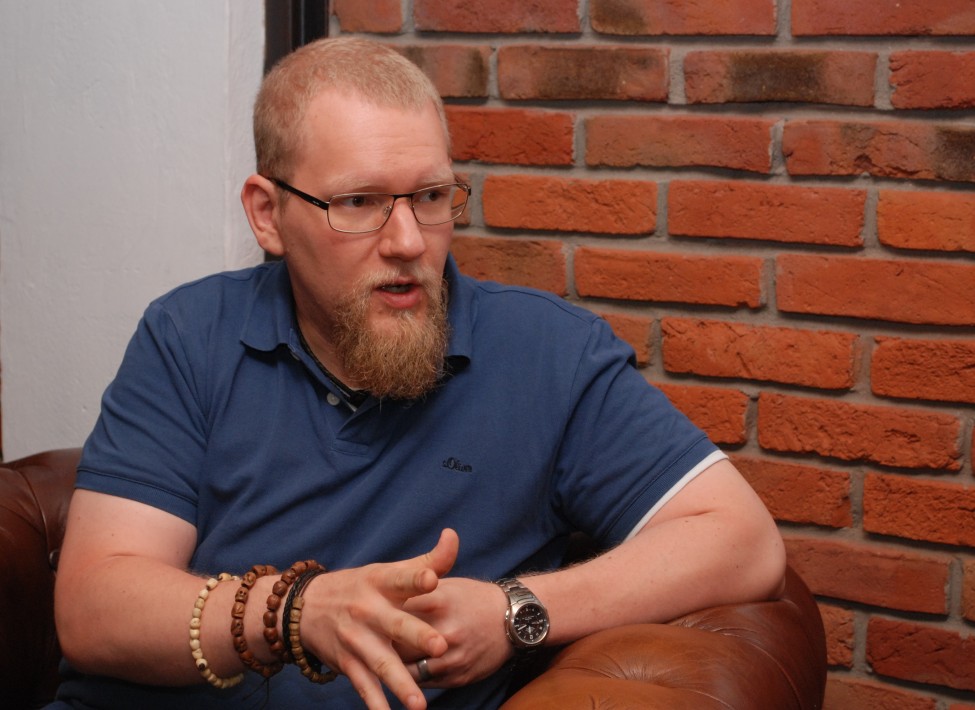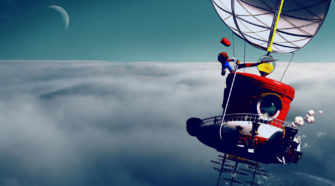Lee la entrevista en español
Peter Gelencser is a relatively new recruit in CD Projekt RED. Before joining the Polish studio in 2013, the current Senior Level Designer worked for three years and a half in Crytek, Budapest, another big development company. His colleagues highlight his creativity and effectiveness at solving problems, characteristics noticeable in The Witcher 3, the only game of the franchise he has worked in so far.
Level design is key when developing any video game. Mechanics, orientation, art, storyline… all these elements rely on a good structural design of the settings. Among other things, Gelencser explained us the dualism of the settings in Geralt’s world, the complexity of designing indoor locations and the importance of achieving a natural composition in locations. «Naturally», an often repeated mantra by Gelencser. This describes how he talked to us, and how things were captured in the game.
Question- A good level design explains how the mechanics work, instructs the players where to go or even tells them part of the storyline without expressly saying anything. How did you approach this in The Witcher 3?
Answer- Well, you kind of said the recipe already. There are all sorts of methods implementing the story: it depends on how we use items, locations or the space to create a nice composition. We are in a very lucky situation here, we have extremely talented environment artists so creating nice assets to work with is really not an issue. We go for a little bit of gut feeling. You try to immerse yourself into the lore and, in those terms, we were very lucky again because The Witcher’s lore is very immersive and it is a nice place to be in. If you get into that mood, it sort of comes naturally.
«Naturally» is an expression we like to refer to when we design our levels because the world of The Witcher is rooted in things that exist. Its universe is very pretty, medieval and with a little bit of magic. So everything you see could exist except for the crystal magic purple things [laughs], but the rest comes from very natural shapes. For example, when we designed the landscapes, we started preparing mountains, rivers, lakes and all that could give room to all the settlements, castles and all the story related locations that we wanted to implement. At that point, we took a look and we considered what would feel natural. If I were a settler or a king what would be the most magnificent, convenient, practical place for me to establish a village, a field, some cattle, a good fishing river, and so on, and we placed things like that. We usually tend not to reshape natural given shapes, rather model all our settlements and locations to the natural shapes so everything is kind of born naturally to a very conveniently shaped world.
Q.- When creating maps for video games, what are the key aspects to consider? And what were those aspects particularly for maps in The Witcher 3?
A.- It is a pretty long process and there are a lot of aspects to consider. Most importantly, there is always an initial idea for density. Density will matter a lot in the final game experience because people need a certain entertainment when they enjoy or immerse themselves on an open world game. As a player, I want something interesting every once in a while but I do not want it to be pushed down my throat constantly, I need a little bit of time. It is like Christmas, you need a present and you need time with your present. You experience a location, you find monsters and you get rewards – a nice shiny sword, an armor, a necklace – and then you need time to fiddle around your inventory or just to test it out with some random monsters. That kind of pacing highs and lows needs to be sorted out well. In order to get this right, you need a lot of experience from previous games and game design tasks, a lot of experimenting and a lot of QA feedback. No doubt this is something very important that we constantly focus on.
However, going back to the previous subject, we put a lot of effort to composition for example. If you are playing in the world of The Witcher I would like to believe you only find spots with a postcard quality, meaning everything you see is well organized. We dedicate a lot of effort and attention to those details because they are very important. Of course there are a lot of other things, but it will always comes down to the previous two aspects when we start shaping a world like that.
“When we design our levels we like to refer to the expression ‘naturally’ because the world of The Witcher is rooted in things that exist”
Q.- In The Witcher 3, you implement many techniques in the scene composition that are similar to those used in painting or in cinema, to what extent is this important for you?
A.- You can apply rules, but you don’t want to live only by rules because it will show. You don’t want a game that is gamy, you want a game that is an experience, especially when there is a rich lore background like in The Witcher 3. You want players to forget it is a video game, so you have to be careful with rules.
This is why we rely on our gut feeling while maintaining very basic tools and rules learnt from cinematography, painting or composition – like the Thirds –. We create nice convenient curbs and paths that guide the players towards certain locations, but you don’t want to measure out everything. Sometimes you will find a weird nook that you want to implement just because at the back of your head it makes sense. Rules are there to support you, but we don’t base the whole experience on them because then it would be a bit systemic and instead we want our locations to feel organic.
Q.- Besides Sapkowski’s work, did you have any other artistic reference?
A.- Basically every work that did anything similar. We watch a lot of videos, movies and play tremendous amounts of video games. I could say the company indulges itself into everything that is important within similar genres. Of course, we watched a lot of Games of Thrones, Lord of The Rings, and all those high quality works that have created something similar, great, and unique that is strong enough to stand on their own. We take a look at them, get inspired by individual solutions or overall experiences, and then create something of our own based on the experience of seeing things around the world. We consider actual places on Earth our most important inspiration because Mother Nature does it best.
“If you are playing in the world of The Witcher I would like to believe you only find spots with a postcard quality, meaning everything you see is well organized”
Q.- What role does illumination play for level design in The Witcher 3?
A.- Oh, a lot. We actually have dedicated people on lightning and illumination. I think the most important level design element that you can use is contrast: the ability to compare things and thus show size, darkness and light, of course. Each of them has only a value if you compare it to something else, and lighting feeds from this very basic rule.
Good lighting is useful in player leading. It happens naturally, you don’t even have to think about it. Moods and atmospheres are greatly founded on lighting. Our weather system which is very sophisticated and elaborated in terms of colors and lighting; for example, the very first thing you see in the game is the sunrise in White Orchard and illumination makes it familiar to you because this is something you have seen before and it looks fantastic.
Q.- What are the benefits of working with you own tool as in this case with REDengine 3?
A.- The main benefit is that our coders are familiar with it and they don’t have to rely on external help much, at least, that’s what I ‘d like to believe. Our feedback gets implemented faster and they can custom tailor it to our own needs. Every single bit of it. It is probably a lot more work building it and maintaining it, but in the end it is beneficial for us because we get exactly what we want to get.
Q.- The Witcher 3 has not followed the usual cross-gen path that we can see in other games. I suppose this decision has improved the end product quality, but how does it impact the level design?
A.- We didn’t release for the previous generation because we didn’t want to compromise the level of quality. This decision influences everything that has quantifiable measures in the game, such as level design. If we want to present the players this much amount of terrain or these many choices, then we can’t go over of a certain performance of a machine. So if we pick a certain quality standard we can’t go lower than certain system requirements. This impacts level design because we don’t have to consider any downgrade in those terms. It is a little bit easier.
“We create nice convenient curbs and paths that guide the players towards certain locations, but you don’t want to measure out everything”
Q.- In an open world game, the player can spend much time freely exploring the mapping. Missions aside, how do you manage to make this an attractive experience?
A.- Visually wise, we have created a lot of diverse environments that entertain the player. The pacing of open world events and interaction possibilities is also very important. Level design is primarily a playground for playing, right? So in each level you get gameplay features to play with and there will be a lot of chances for that, like trying all your new equipment acquired with different monster encounters. This is what we pay most attention to, to make sure that whatever you experience in the open world is diverse and well based out.
Q.- There is a lot of manual work in The Witcher 3, but I’m assuming reusing assets is essential when covering such a huge area of game, how do you manage to hide this from players?
A.- With a combination of several elements. Sometimes you have to reuse meshes simply because of the time or productions constraints, and sometimes they fit other locations just as well as their primarily destination. We have a lot of tools to blend assets with each other and we try to use them as creatively as possible.
During the block out phase, when we experiment with the initial shapes and looks, we start planning with the already usable meshes and, of course, when we create meshes we always look for multiple sizes and multiple face reusability, and combination possibility with other meshes. We have location-specific colors and materials, some elements cannot be found anywhere else but in Kaer Morhen. But still, the quality of each mesh and asset is created so they can be blended with much greater ease than it would be if we didn’t pay attention to that.
“We consider actual places on Earth our most important inspiration”
Q.- In The Witcher 3, the player makes decisions that impact the world and the same scenery can have different environments based on the player’s choices. Does this affect level design?
A.- Yes, because there are certain constraints. A location cannot look entirely different, and this is limiting. However, we wanted to show how much your decisions affect the locations because this is the most prominent way to show the impact of your choices.
We use many elements and tools to make these changes. Sometimes we rearrange locations and provide them with many small details that tell the story. For example, if a place is completely ransacked by bandits, we build a few tracks and put blood everywhere. But we also use our game designers and quest designers to put communities consisting of different people with different professions that will have a different behavior with the player.
So this is an amalgamation of all our disciplines. Sometimes even the weather plays a part in telling how a location is completely different: we rebuild the place, we have different kinds of people, different kinds of monsters,… As I said, every discipline joins in and creates a different thing so, in the end, we have two different places – or even more – that show you a different story, but still well blended with every other place.
Q.- Unlike other fantastic series, it seems that The Witcher wants to show a more earthly and realistic world, is this true? How do you reflect this at the artistic and level design?
A.- From a designer perspective, we wanted to maintain proportions, so we didn’t want to forfeit proportions for the sake of gameplay. Therefore, it is a compromise of providing a comfortable gameplay environment and still having familiar sizes and familiar looks. Of course, some things have to be out of proportion to make them comfortable for gameplay, but usually we pay attention to make everything look and feel as it would do in reality. If you do that consistently from the start until the end of the delivery, it will result in something that is familiar and communicates subconsciously.
Q.- As you said before, you get inspiration from real locations. Did you consider particular outdoor locations here in Poland or in other nearby regions?
A.- Definitely, our environment lead really likes certain regions in Poland that are extremely beautiful. He is inspired by a region called Masuria which is an area full of lakes and a little bit marshy. He has showed us a lot of photos from all parts of Poland, I might not be familiar with every name but they look fascinating.
So definitely a lot of regions in Poland have inspired the areas and environments in The Witcher. And of course if we needed something special, something with a different characteristic, then we consider different parts of the world. But yeah, most of our natural and earthly shapes, almost all of them, have been inspired by real parts of the world.
“It is a compromise of providing a comfortable gameplay environment and still having familiar sizes. If you do that consistently, it will result in something that is familiar and communicates subconsciously”
Q.- While playing I have noticed that the indoor locations were also very carefully designed, how can you tell the story of a NPC or a family using the indoor design of buildings?
A.- Well, we consider their habits, the everyday life of these people. We already have communities, animations and all sort of activities that we can give to NPCs, and I mean actions they regularly do like washing, cleaning, cutting meat, and other everyday duties. These habits require locations, for example dedicated rooms and useable items, so we place them carefully. For instance, if you want to establish a family home feeling, you have to pay attention to details such as everybody in the house has a bed to sleep at.
I remember that there was a location that I really loved creating, I think it was called Nowhere Inn in Novigrad, which is a bit of a deteriorated place for four people that belongs to a woman who lives in a harsh environment. So I made her living habitat resemble this: I placed a little broken mirror above the bed, some clothes lying around surrounded by items we usually put in the kitchen. So there is a very interesting contrast having a vanity corner for owner immediately surrounded by meat, garlic and stuff like that. All these aspects need to be considered when you want to create a subconsciously communicated story.
Q.- How does work in animation, quest design, and gameplay impact your department? How would you describe this team work?
A.- We are lucky because the game connects us. This is why the game is really good because the lore and our passion for it are great and everlasting, so communication was easier. You don’t just go to a different discipline to ask for an animation or a quest bit or they ask you for something. In the studio there is this atmosphere that feels a lot like the atmosphere in the game and that makes it easier to tell what things we require for a certain location. So Quest had an easier job asking us for locations, they just had to tell us «we need a fight in Skellige» and that was usually enough. If I know the quest leading up to it, that he’s coming from there, that he’s going to find a spider at a certain location and that this particular quest designer likes when I do this, it happens automatically. So cooperation among content disciplines had this very nice natural rhythm through almost all development.
Coders are a complete different thing, coders are evil and mean [laughs]. They are way more to the ground, into reality, so it is very different. Content design had this magical atmosphere around it.
“Geralt’s adventures end with The Witcher 3 and everything else is for you to find out in the future. I really do not wish to spoil anything, but we really enjoy the world of The Witcher”
Q.- The Witcher 3 is the most ambitious game in the series. In your opinion, what was the biggest challenge you faced?
A.- Consistent quality. If you provide such an amount of game to the public making sure everything is good is something I couldn’t wrap my mind around until the very end. I was always worried we were going to forget some places because it is so huge. It is funny, because we don’t have many level designers at the studio, we have four working level designers on the entire place, plus the environment artists developing and polishing locations. I couldn’t visit every single spot in the game until the end because I was working on dedicated spots, so making sure that everything everybody works on is consistently good and goes well with everything else everybody has created was a constant challenge. For me this was the biggest challenge, but we got the better of it.
Q.- Even if you haven’t closed the door completely, at CD Projekt RED you have said the series is finished with this third part. Did you get tired of Geralt de Rivia?
A.- Oh, no, no, no [laughs].
Q.- Or do you hide a challenge for a potential fourth part?
A.- What I would like to answer to this question is that CD Projekt RED considers quality as the most important product we deliver and The Witcher is a very story heavy game. In our opinion, a story is only good if it is concluded, if it ends at some point. So Geralt’s adventures end with The Witcher 3 and everything else is for you to find out in the future. I really do not wish to spoil anything at this point, but we really enjoy the world of The Witcher.
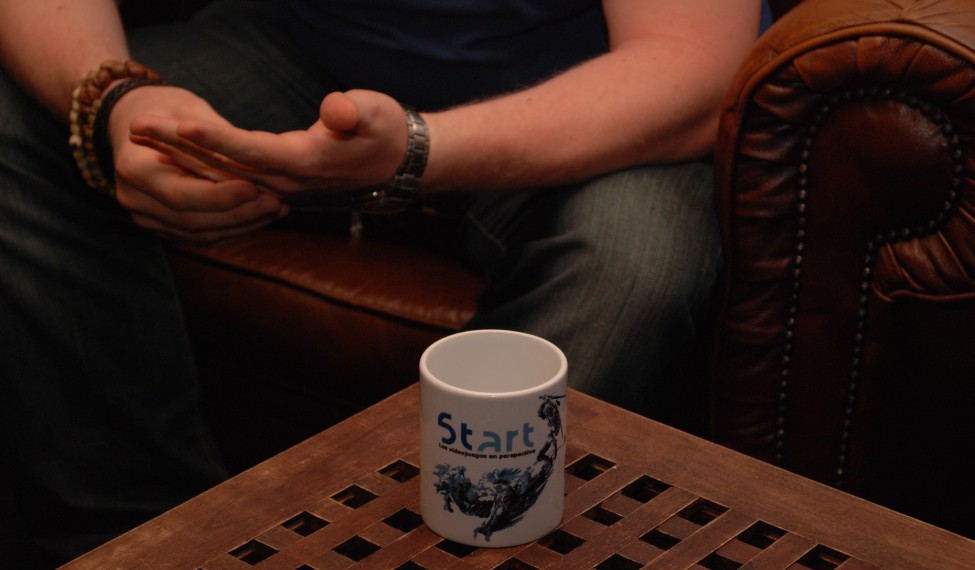 Photographs by K
Photographs by K


